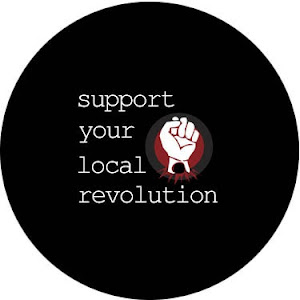Americans like to believe that the past is a dead letter. Its words echo from a void whose meaning is as easily dispensable as a candy wrapper. Sure, the past is nice for a museum but in living real life, you have to deal with now.
For some superficial readers of Emerson's essay, On Self-Reliance, this is what uniquely defines us as Americans. Rejecting all traditions and customes of the past we define our own reality and thereby create a new world wherever we set foot. ...
Emerson's call to individuality cannot be reduced to such a simplistic formulation, however. While it's no doubt a good thing that in America tribal affiliations and things like blood-codes and local mythologies are jettisoned, a person who cannot understand the effects that the past has on them as a person is living in a one-dimensional and ultimately delusional world.
Of course, history works on numerous levels. There is the greater history of the species or the nation as well as the history each individual experiences simply because they are unique and definitive--someone whose like will never appear in ther worls again.
It is the effects that the national history has on the way people come to know themselves that is often the hardest dimension of one's self-consciousness to determine and assess. A community or society's past actions pass into legend and story. They also pass over into daily routines and ways of thinking that are quickly accepted as normal and form part of the identity we accept as ourselves.
One instance of this became apparent to me once when I was driving east from New Mexico. While passing through Oklahoma, I realized the many towns and roads that had Indian names. The restaurant I ate at displayed fake Indian paraphernalia on the walls. Now, there was a reservation nearby some of these places--but there were also many places that no Indian had probably walked around for more than a hundred years.
Call it my road-weary paranoia, but I began to think how truly ironic this situation was. What struck me most was how the descendants of those who had perhaps killed, raped, and massacred Indians had taken over the identity--the traditions, customs, and artifacts--of those they'd killed.
In my most hallucinatory moment, I likened this cultural imperialism to the ritual wherein the Aztec priest flays the sacrificial victim's skin from his body. Then the priest steps into the bloody carcass devoid of muscle and bone and dances to the war gods.
As I continued my journey cross-country, these thoughts haunted me, even after I reached New York.
Something akin to these thoughts come through in the review of a book on the Black Hawk Indian uprising before the US Civil War. In summing up the author's argument about this uprising, the reviewer observes the following:War is a story we tell ourselves in order to make sense out of what is otherwise organized and semiorganized violence and murder. Creating that story involves giving the violence a larger meaning and denying that the enemy has any humanity. This the militia did as it pursued the Sauk through summer 1832, casting the fight as the restoration of peace for settlers while characterizing the Sauk as "wild beasts more than men." Whatever else may have changed in the nearly 175 years since the massacre at Bad Ax, that much has not, as we currently confront the uncomfortable truth that Americans are capable of justifying unspeakable depravity in high-minded ways.
Indeed, how we justify this depravity and how the acts comprising the depravity enter into the very acts we accept as normal to everyday reality deserve some reflection and meditation.
Monday, January 23, 2006
History and Its Impact
Subscribe to:
Post Comments (Atom)






No comments:
Post a Comment